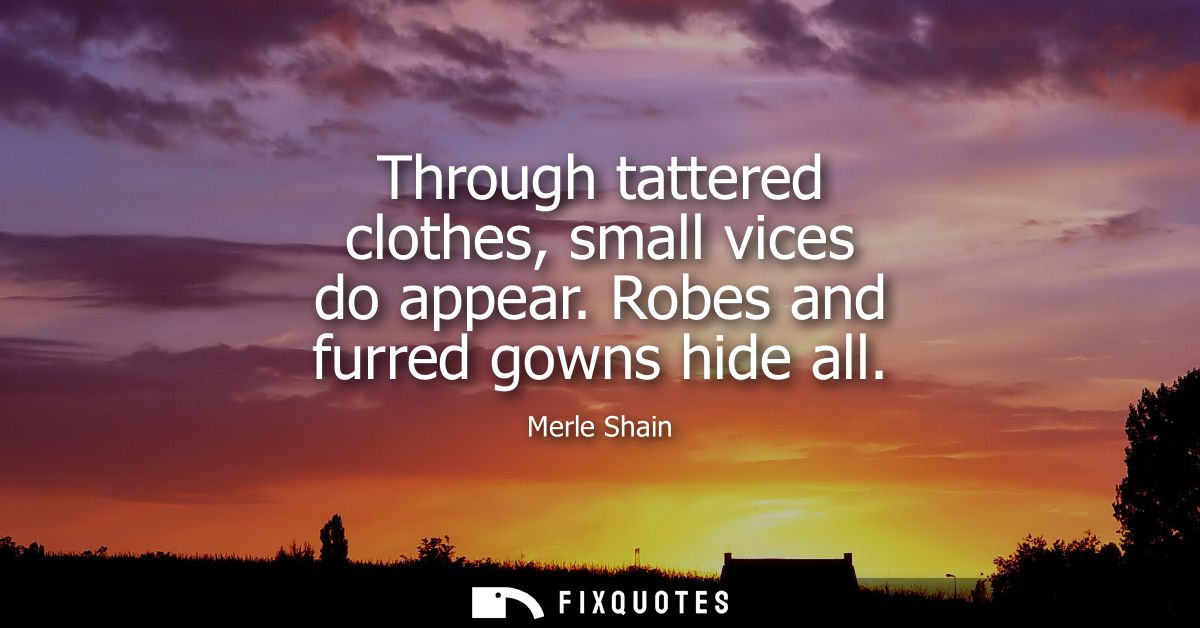"Through tattered clothes, small vices do appear. Robes and furred gowns hide all"
About this Quote
Clothing becomes moral camouflage. When garments are tattered, every crease and stain invites scrutiny, and small lapses are magnified into character verdicts. Poverty strips people not only of comfort but of privacy; need is conspicuous, and coping behaviors, cutting corners, bending rules, are performed in the open. By contrast, robes and furred gowns speak the language of authority and refinement. They do not merely warm the body; they confer legitimacy, silence questions, and muffle the sound of wrongdoing. Power dresses itself in respectability and becomes harder to interrogate.
Behind this image sits an indictment of unequal judgment. Petty theft in a poor neighborhood is punished with zeal; large-scale fraud in a boardroom is negotiated over lunch. The same breach looks different depending on who commits it and how well they are wrapped, by lawyers, institutions, or social esteem. Even the word “robes” evokes the court, hinting that justice itself may be swayed by ceremony, titles, and the deference they command.
There is also a psychological warning. We read morality from surfaces. The halo effect persuades us that elegance equals virtue, while the roughness of poverty reads as vice. We confuse aesthetics with ethics. The result is a cultural habit of shaming the visible, forgivable faults of the vulnerable and excusing the hidden, consequential harms of the powerful.
The remedy is not to romanticize poverty or demonize wealth but to calibrate our gaze. Judge by impact, not image. Extend mercy for the small vices that arise from scarcity, and put real sunlight on concealed harms that flourish behind status. Build systems that are transparent enough to see through furred gowns and humane enough not to humiliate tattered clothes. The moral task is to refuse costume as evidence, to resist the seduction of appearances, and to demand accountability where it is hardest to see.
About the Author

